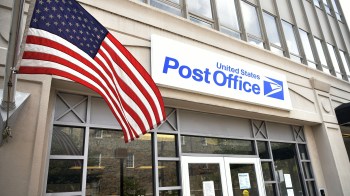Why is our banking system so far behind?
Say you owe money to a friend. How do you pay?
If you live in the United States, your fastest option is probably withdrawing cash from an ATM. Another possibility is writing a check.
But even after the check gets deposited, the cash won’t be available for hours, or days.
You can also wire the money electronically. Incredibly, that option often takes the longest of all.
These slow, inefficient choices seem normal to Americans, because we’re used to them. But when you examine what’s happening in other countries, it becomes clear just how antiquated the U.S. payments system has become.
In the United Kingdom, you log into your online banking account, hit send, and the money arrives in your friend’s account within 10 seconds. In Sweden, you pick up your mobile phone, and the transaction takes only about six seconds to process. Even less wealthy countries like Mexico and South Africa have moved to near-real-time payments.
In contrast, the U.S. still relies on infrastructure that dates back to the 1970s. If you pay your cable TV bill online on a Thursday, the payment may not be completed until the following Monday.
So why have we fallen so far behind? The root of the problem, according to experts, is a lack of leadership. No one is really in charge of our payments system.
“You would need somebody like the Federal Reserve, somebody who is a neutral third party, with impeccable credentials, to show leadership and to set goals,” says Gene Neyer, global product manager at FundTech, a company that has helped other countries move to near-real-time systems.
The good news is that the U.S. Federal Reserve recognizes the problem. Last autumn the central bank laid out a vision of the future for payments. That vision looks a lot like where Sweden already is today.
“Today, U.S. consumers can’t make a near-real-time payment in a convenient and cost effective way from any bank account to any other bank account,” the Fed’s 13-page paper noted. “In a world where several other countries are moving to ubiquitous near-real-time retail payment systems, the U.S. payment system does not have this capability.”
But the Fed, which historically has been wary of imposing mandates on banks, is trying not to come off as heavy-handed. And that cautious approach may make it harder to bring about change in the banking industry.
In the U.K. and some of the other countries that now have fast payment systems, the government required banks to make the upgrades.
“The banks were being bullied into doing it here,” says Dave Birch, a U.K. payments consultant.
Already, the Fed’s vision is sparking signs of resistance from the biggest U.S. banks. A trade group representing the nation’s largest banks, the Clearing House, recently filed comments arguing that any overhaul should pay for itself – not just in the long run, but also in the short-term.
That’s setting a high bar for change, because banks will have to make sizable upfront investments to upgrade their computer systems.
Eventually, those investments could reach the break-even point, says Craig Tillotson, managing director of Britain’s Faster Payments Scheme. He notes that electronic payments are cheaper to process than checks.
But Tillotson argues that fast payments have other, less tangible benefits for the banking sector.
“I think you have to see this as an investment an industry makes to meet the needs of its customers,” he says. “You have to ask the question of whether you want to be in the modern world, whether you want to stay at the heart of how consumers and business manage their finances and the flow of their money.”
The holy grail of person-to-person payments is the ability to send money instantaneously to anyone else’s mobile phone number. In Sweden, that’s been reality for over a year now, since the rollout of a system known as “Swish.”
The upgrades have brought Swedish consumers a lot of benefits, according to Lars Gunnstam, who heads the consortium of banks that runs Swish.
You can split a dinner bill while you’re still sitting in the restaurant. Or make a last-minute payment to your utility company. A food truck owner, who would otherwise waste a lot of time handling cash, can instead get paid via mobile phone.
“He can immediately see that he has received the money,” explains Gunnstam, an executive at the Swedish bank Nordea. “And you can immediately shake hands and say, ‘Fine, done.’ That is very important if you do business out in the street.”
To be fair, there is innovation happening here in the U.S., too. Services like Popmoney and Chase QuickPay allow you to send money to a friend over your mobile phone.
But in terms of fast payments, those services don’t even come close to linking every U.S. bank and credit union. That makes them a lot less useful than a near-real-time system that’s available to every bank.
“You must build a sector solution that’s open for everybody,” Gunnstam says. “If you can secure that, it will be a success.”
In Sweden, as consumers use the Swish payment system, “the social media, the blog world, has been extremely positive. And that is very unusual for a bank, I can promise you,” Gunnstam chuckles.
For U.S. banks, that kind of glowing PR is likely to be a long way off. Under the timeline established by the Federal Reserve, the desired completion date for the overhaul is still a decade away.
There’s a lot happening in the world. Through it all, Marketplace is here for you.
You rely on Marketplace to break down the world’s events and tell you how it affects you in a fact-based, approachable way. We rely on your financial support to keep making that possible.
Your donation today powers the independent journalism that you rely on. For just $5/month, you can help sustain Marketplace so we can keep reporting on the things that matter to you.


















